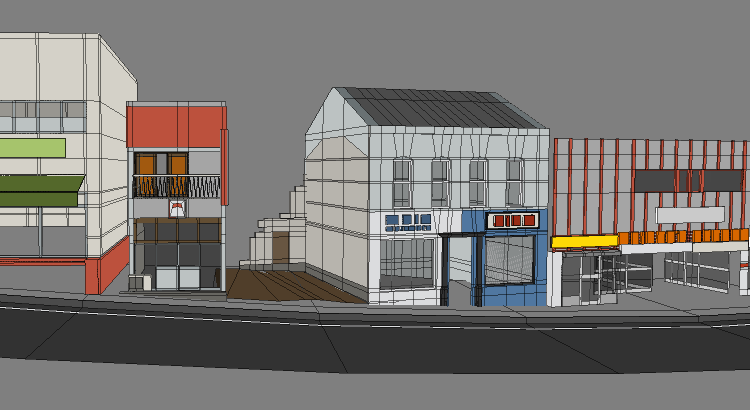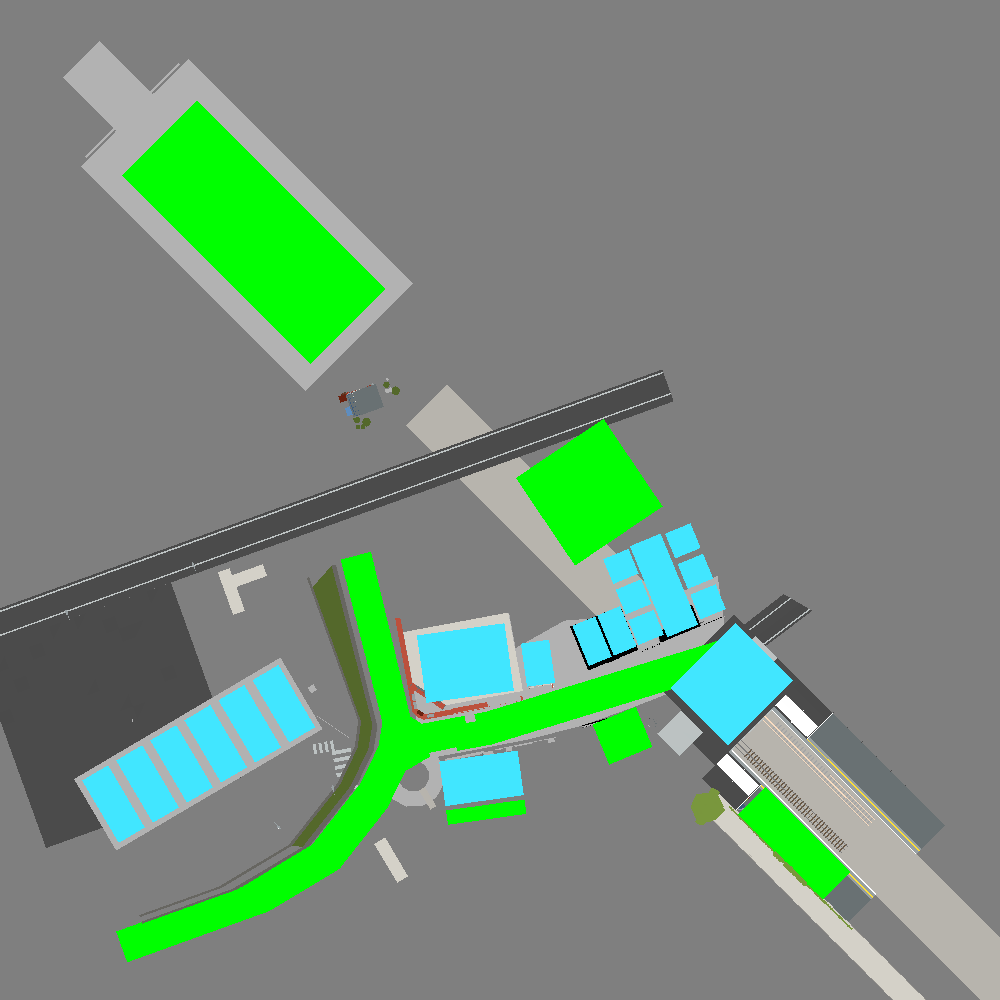I’ve spent the last few weeks trying to fix down the final scope of the game. Since I started working on the idea it’s ballooned from a few rooms to a sprawling epic and all the way back down again. In the end, if I’m going to make something I’m happy with, that’s actually finish-able, I’ll need to set some boundaries…
So far my approach has involved very little planning ahead, I know the kind of game I want to make, I know how I want it to look and the atmosphere I want to convey, not so certain when it comes to quantifiable specifics. I’ve a huge list of ideas, locations, stories, individual puzzles, characters etc. and I’m happy that even the most seemingly disconnected ideas can have an enjoyable game woven around them. The problem arises when I try to envisage a point at which to stop, I always worry I’m fencing myself in or that I’ll be limiting my options further down the line, that a natural finishing point will present itself at some stage if I just keep going. The truth is though, that I could keep adding new ideas forever and the game will happily expand to accommodate them, it just wont ever get finished. So, I’ve decided to set some kind of arbitrary limit, locations tend to be the jumping-off point for new ideas so it makes sense to limit them first, to set a geographical space the game has to fit in, a house, a street, a country, something with some kind of outer limit.
But how big to make it? This is the first game I’ve developed, really the first large project I’ve had to direct and manage myself, so a lot of the time I’m pulling numbers out of thin air. It’s tricky to do too much specific research with games as the the experience tends to be very subjective, but it’s at least reassuring to compare and contrast sometimes and there are some broad conclusions to be drawn. A quick scan through my Steam library offers one up straight away; pretty much every adventure game I’ve enjoyed in the last few years; Lumino City, Machinarium, Resonance, Blackwell Epiphany, Gemini Rue and The Inner World, all come in at around 6 hours play time. Looking on howlongtobeat.com, it seems nearly all my old favourites average about that too; Beneath a Steel Sky, Indiana Jones and the Last Crusade, Simon the Sorcerer. I’m not the first to spot this, the developers behind Primordia also mention it in one of their devlogs:
Primordia’s average playing time is about the same or slightly longer than that of Monkey Island, Quest for Glory, King’s Quest V or VI, or Sam & Max Hit the Road. All of them come in from 5 to 6 hours…
…If you’d asked me, though, I would’ve said that those games were much larger than Primordia, and they certainly are in “physical space.” Unlike Primordia, they are full of empty rooms; if not entirely empty, puzzle-less rooms; if not puzzle-less, well certainly rooms that don’t have NPCs or complex UIs in them. By contrast, almost every room in Primordia contains: (1) an NPC; (2) a unique UI; (3) an inventory puzzle; and (4) a half dozen “flavor” hotspots, each with unique quips depending on what you use on the hotspot…
http://www.wormwoodstudios.com/2014/09/lesson-for-next-primordium.html
The point about empty rooms and “physical space” is an intriguing one. Out of curiosity, I spent a bit of time looking up the numbers for a few of the games above; Monkey Island has 99 different rooms including title cards etc. according to the debug mode Machinarium says it has about 30 in the FAQs here. I also looked up a few walk-throughs and maps and made rough counts, Lumino City has around 20 separate locations, though probably the same again in individual puzzle screens, Simon the Sorcerer had about 60 and Beneath a Steel Sky around 75. That’s a pretty wide range, yet all these games take around the same 6 hours to finish and, at least in my experience, they all seemed to hit a sweet spot in terms of scale, I didn’t feel short-changed nor did I lose interest and leave any of them unfinished. I suppose it makes sense when you consider how different a style each game has, some have lots of logic/sliding tile style puzzles, some are dialogue heavy, some contain a fair bit of backtracking through ostensibly empty rooms etc. We should be more concerned with density perhaps then, rather than sheer “physical space”.
This is the current “physical space” of the main area in Toryansé. The idea for a while now has been to have a number of different locations on different train stops along a line, so far I’ve been working on the suburbs where the main character lives, it has a station, a bunch of shops and a large block of flats. It’s still very much a work-in-progress but I’ve quickly marked on each individual “room” that I have a set plan for. So far I can count 25 in the shops and station alone, and that isn’t including close-ups for certain puzzles, or taking into consideration that, as Toryansé is in 3d with a moving camera, several areas here would probably count as multiple separate “rooms” in a more traditional sense. The block of flats could potentially have anywhere from 10 up to 100 separate locations in it depending on how I approach it. Conservatively, at this stage, if I were to just finish off what I’ve started without adding any more, I reckon I’d end up with approx 50-75 distinct “rooms” for this one area alone. Even making some extremely broad assumptions regarding “density” and how the style of game might correlate with the number of locations, the idea of adding more train stops at this stage is ridiculous, if anything I should be chopping bits out of this one!
So this is now the extent of the game, the office area from the demo, the suburban area I’m currently working on, and a train connecting the two. I just have to focus now on making the space I have as interesting and enjoyable to explore as possible…


